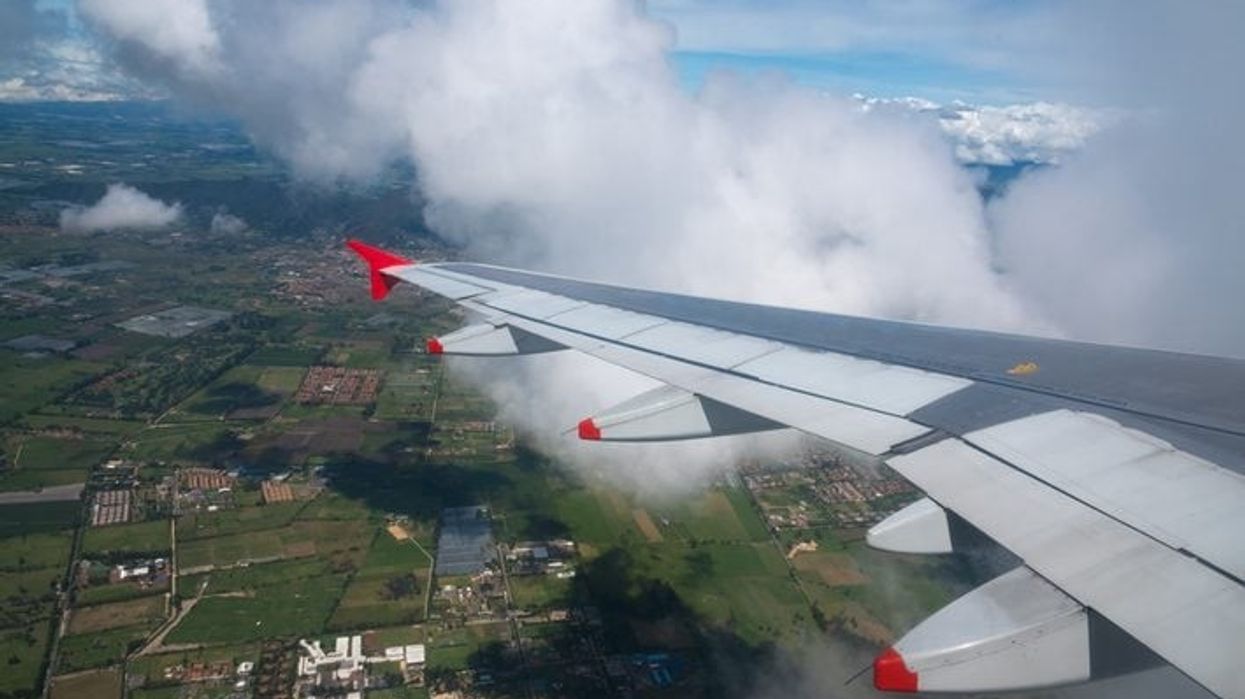A task force is being established by global airlines to address the issue of non-carbon dioxide (CO2) emissions caused by aircraft, specifically focusing on contrails.
Contrails, the cloudy streaks formed by airplanes, have been recognised as an environmental concern that has received less attention up till now, in comparison to carbon pollution in the context of global warming.
The International Air Transport Association (IATA), which represents approximately 300 major airlines, is preparing to hold discussions on the warming impact of contrails for the first time during its annual meeting in Istanbul, scheduled next week.
Contrails are created when aircraft fly through moist atmospheric conditions, resulting in the formation of frozen ice crystals.
While contrails themselves do not emit CO2, scientists have identified that they can contribute to the trapping and reflection of radiation, ultimately leading to a harmful warming effect on the earth.
According to the IATA, a newly formed task force will commence its operations this year, aiming to facilitate collaboration between researchers and airlines.
The primary objective of the task force is to minimise the formation of contrails.
The idea is to "accurately predict conditions favouring the formation of contrails and minimise the risks of increased fuel when avoiding them," an IATA spokesperson said.
However, a number of researchers, environmental groups, and companies offering potential solutions argue that airlines have not taken sufficient action to address the issue of non-CO2 emissions.
These experts contend that research indicates non-CO2 emissions can pose a greater threat to the environment than carbon emissions.
"(Up to) 10% of all flights contribute to 80% of the warming effects," said Roger Teoh, a researcher at Imperial College London, adding that "the annual warming effects of contrails could be two times larger than the cumulative effects from CO2."
SATAVIA in the UK and Estuaire based in Paris are among the firms utilising digital modelling to identify areas of moist air that are prone to contrail formation.
They offer alternative flight routes that aim to avoid contrails in the sky.
But while a few airlines have made investments to reduce contrails, others contend that these new flight plans may result in increased fuel burn and subsequent carbon emissions.
Additionally, some individuals question the scientific evidence supporting the extent of contrails' environmental impact.
In response to pressure from environmental organisations, European regulators are intensifying their attention on the issue of non-CO2 emissions.
New regulations within the European Union, set to be implemented in 2025, will require airlines to monitor and disclose their non-CO2 emissions as part of emissions trading.
Airlines have also made commitments to achieve net-zero carbon emissions by 2050, primarily through the adoption of Sustainable Aviation Fuel (SAF), a limited resource of alternative fuels derived from renewable sources, such as biofuels or synthetic fuels, utilised to power aircrafts.
SATAVIA, headquartered in Cambridge, England, emphasises that by excessively prioritising carbon emissions, the aviation industry may be investing significant funds in a solution that could take several years to yield noticeable results.
Chief Executive Adam Durant said, "The cost of scaling SAF is in the trillions, but the cost of solving this non-CO2 problem is probably just in the tens of millions."
(Reuters)












